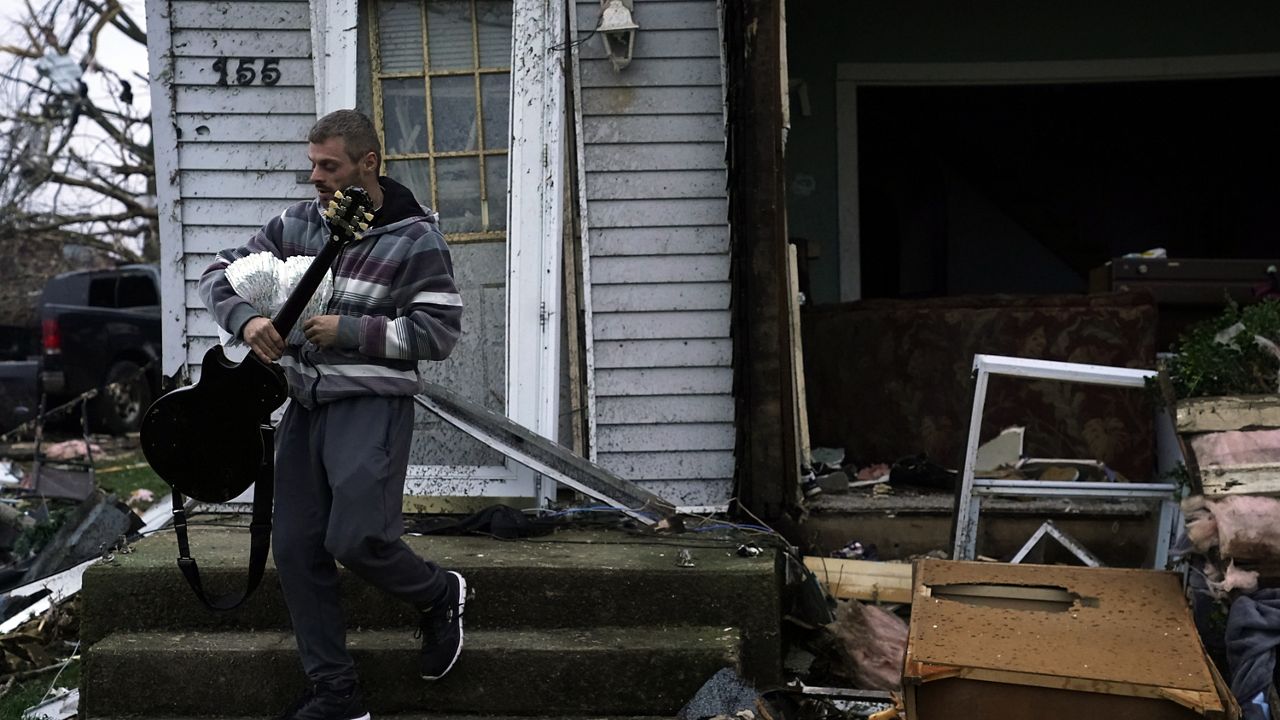OHIO — It has been one week since storms and a slew of tornadoes ripped through communities in central Ohio resulting in three deaths, at least 25 injuries and significant property damage.
According to a press release from the Ohio Emergency Management Agency (EMA), various local and state agencies continue to assist the Indian Lake area, which was hardest hit by the storms. The Logan County EMA is sharing information on debris drop-off on their Facebook page, and law enforcement is on 24-hour patrol in residential and business areas.
It is recommended that the public not burn debris. Fire and EMS departments are continuing to answer service calls, according to the release. Multi-Agency Resource Centers have been established at 337 East Main Street in Russells Point and at 165 E. Lake Street in Lakeview "where information on county, local government, and community resources can be obtained."
One of the hardest hit regions was the Indian Lake area of Logan County, northwest of Columbus. The villages of Lakeview and Russells Point were devastated by the storm.
At a press conference the day after the storms, Sheriff Randy Dodds confirmed the three people had been killed in Logan County.
“Which, when you see this damage, you’ll be surprised that that was only three,” he said.
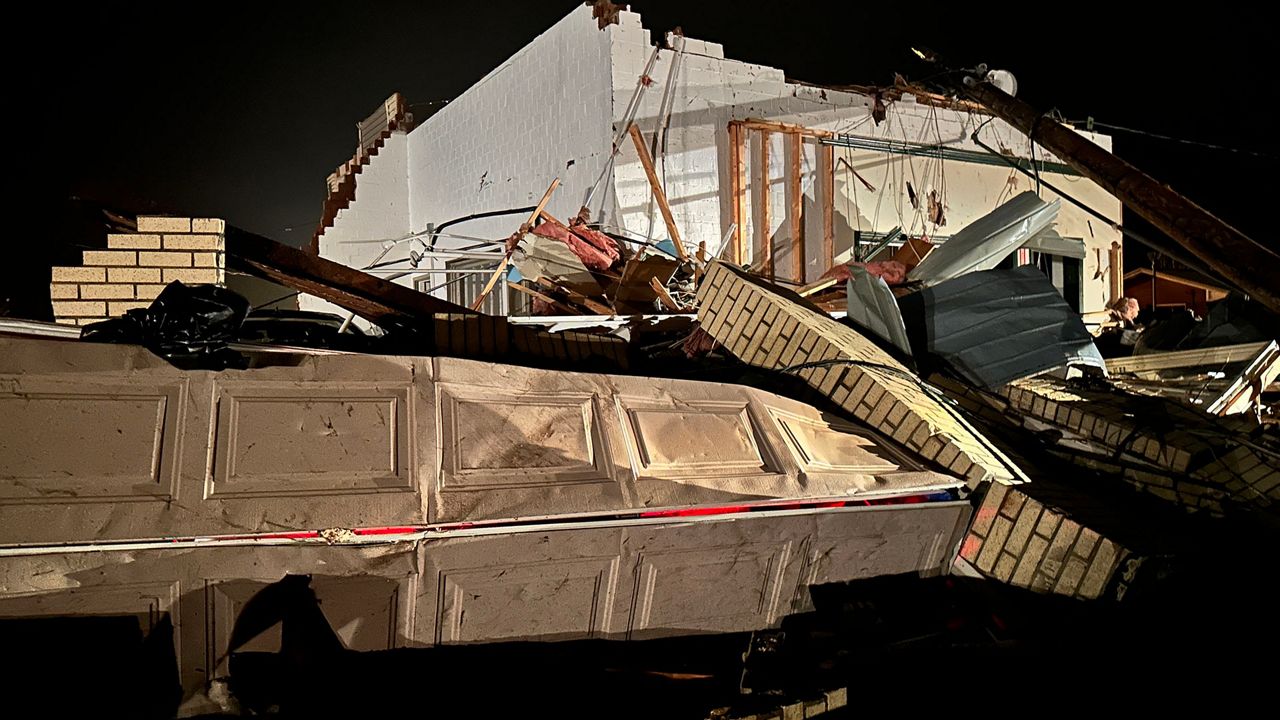
Amber Fagan, the president and chief executive of the Indian Lake Area Chamber of Commerce, said Lakeview had been “completely demolished.” She said places were burning and power lines went through people’s windows.
One Lakeview resident, Sandy Smith, had been heading to take shelter when her roof came down. Her husband saw their garage blow away.
Read more about the damage around Indian Lake and other areas in central Ohio
After the storms, survivors in the Indian Lake area recounted living through the experience and the damage it caused.
One resident, Blaine Schmidt, took shelter in a bathtub with his roomate. They used the shower curtain as protection from the flying glass. Sandy Smith rescued her cat from upstairs, who was trapped by a bookshelf. On her way back down, the roof collapsed.
Read survivor accounts from the night the storms hit
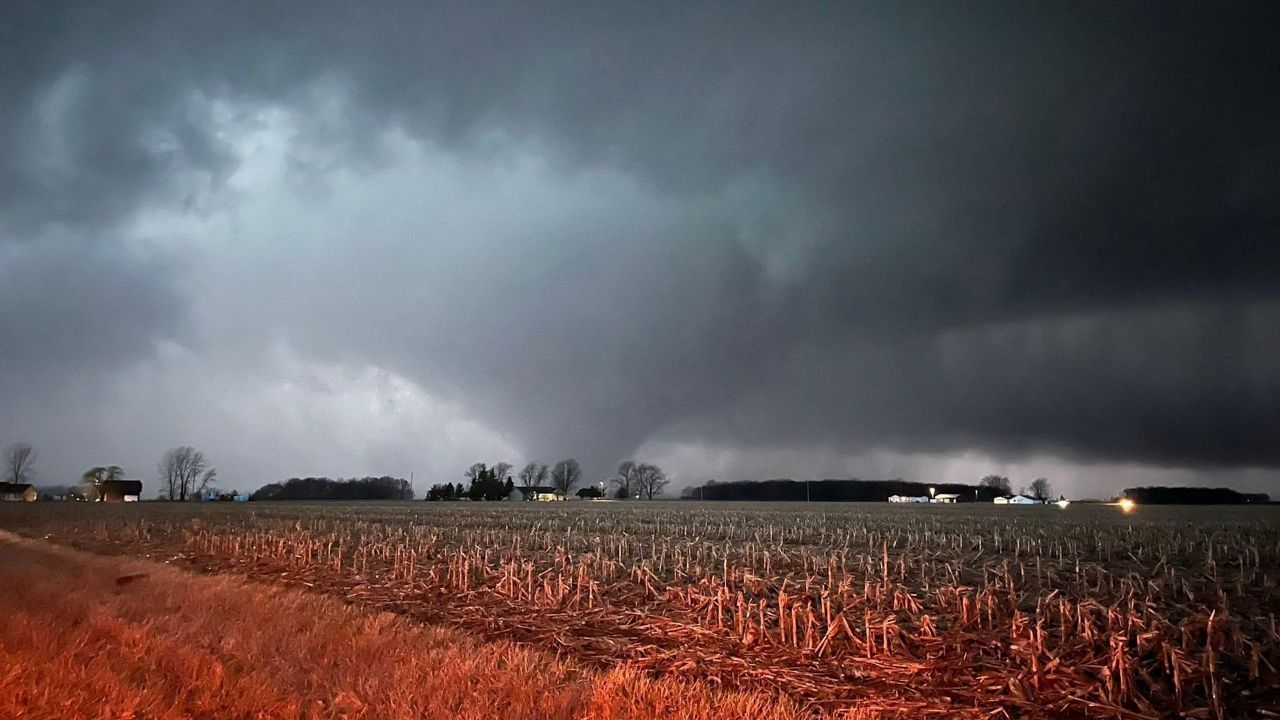
The National Weather Service has confirmed nine tornadoes touched down last Thursday. Sotrm teams were deployed across the region on Friday to examine the damage and determine the intensity of the tornadoes.
Of the confirmed tornadoes, the strongest was an EF3 that touched down in Auglaize County near Fryburg and continued through to northern Logan County, wreaking destruction on communities near Indian Lake.
Read more about the NWS survey team’s findings
Photos from the storms and the aftermath shows the destruction the severe weather caused across the state. In some images, you can see entire buildings destroyed, downed utility lines and flipped vehicles.
In aerial shots, you can see debris scattered across yards and entire neighborhoods, alongside severely damaged roofs.
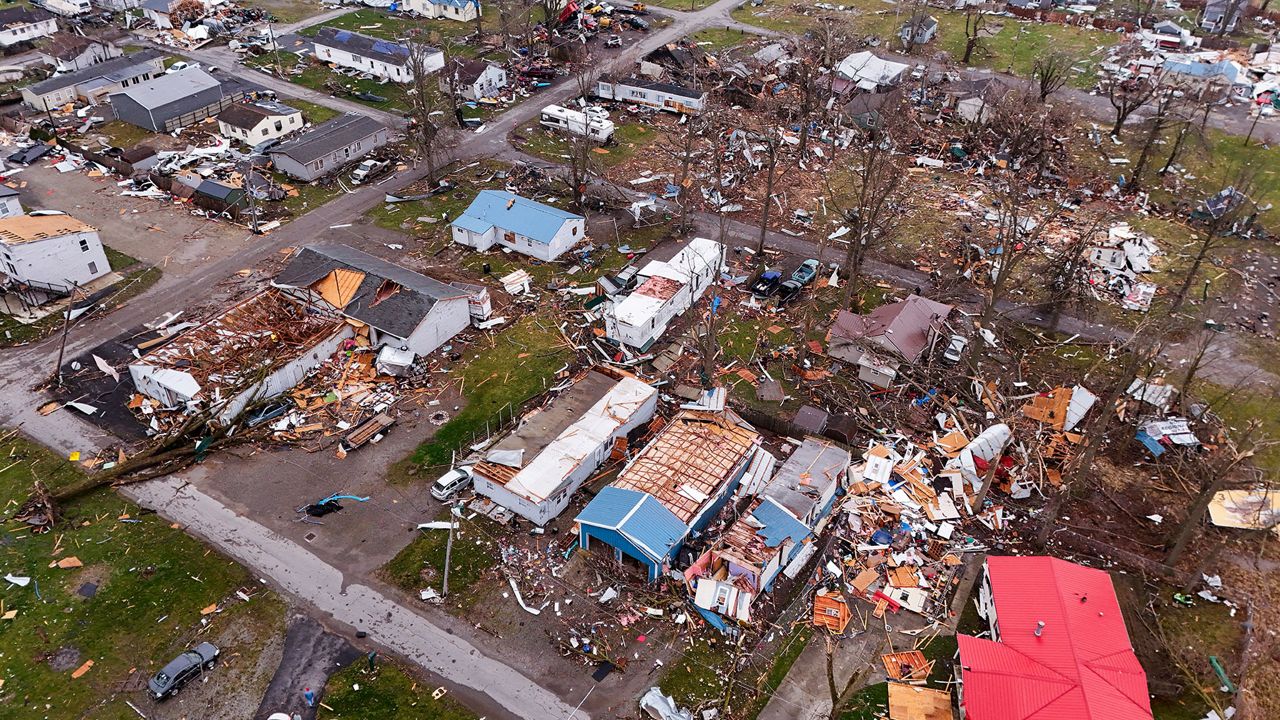
See photos of the damage across central Ohio
Indian Lake is an area known for tourism in the summers, and this storm has some residents concerned about the economic effects this damage may have on their summer season.
Betty Tierney, who owns Gene’s Marine Bait and Tackle Shop, is worried about the long term impacts.
“People aren’t going to be able to come,” she said. “There’s not going to be, a lot of the Airbnb’s are probably gone, a lot of the weekend places that the people own may be gone.”
Read more about Indian Lake’s post-storm economic concerns
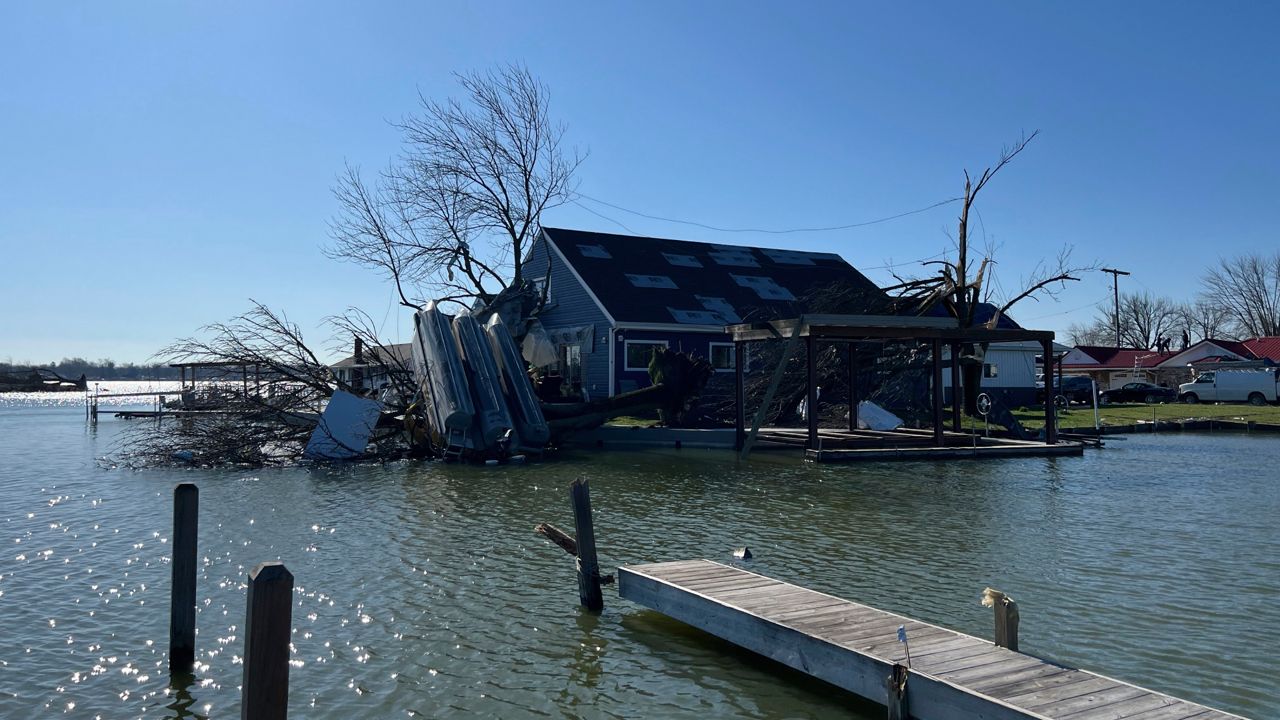
Just this week, as the community continues to recover, some normalcy returned at least for Indian Lake students as they returned to classes Wednesday morning.
“Experiencing trauma is difficult, and just giving kids back the chance to get back to some kind of normalcy,” said Indian Lake High School Principal, Kyle Wagner.
The school district reopened nearly six days after the EF3 tornado ripped through the community.
Read more about the community’s return to school
According to the experts, our warm winter may have been a key ingredient to this severe weather event.
It's a bit early, but not unprecedented, for such a tornado outbreak usually associated with May or April, but that's also because of the hottest winter in both U.S. and global records, meteorologists said.
“In order to get severe storms this far north this time time of year, it's got to be warm,” said Northern Illinois University meteorology professor Victor Gensini.
Read more about the dangerous weather cocktail that led to the tornado outbreak
The Associated Press contributed to this report.



